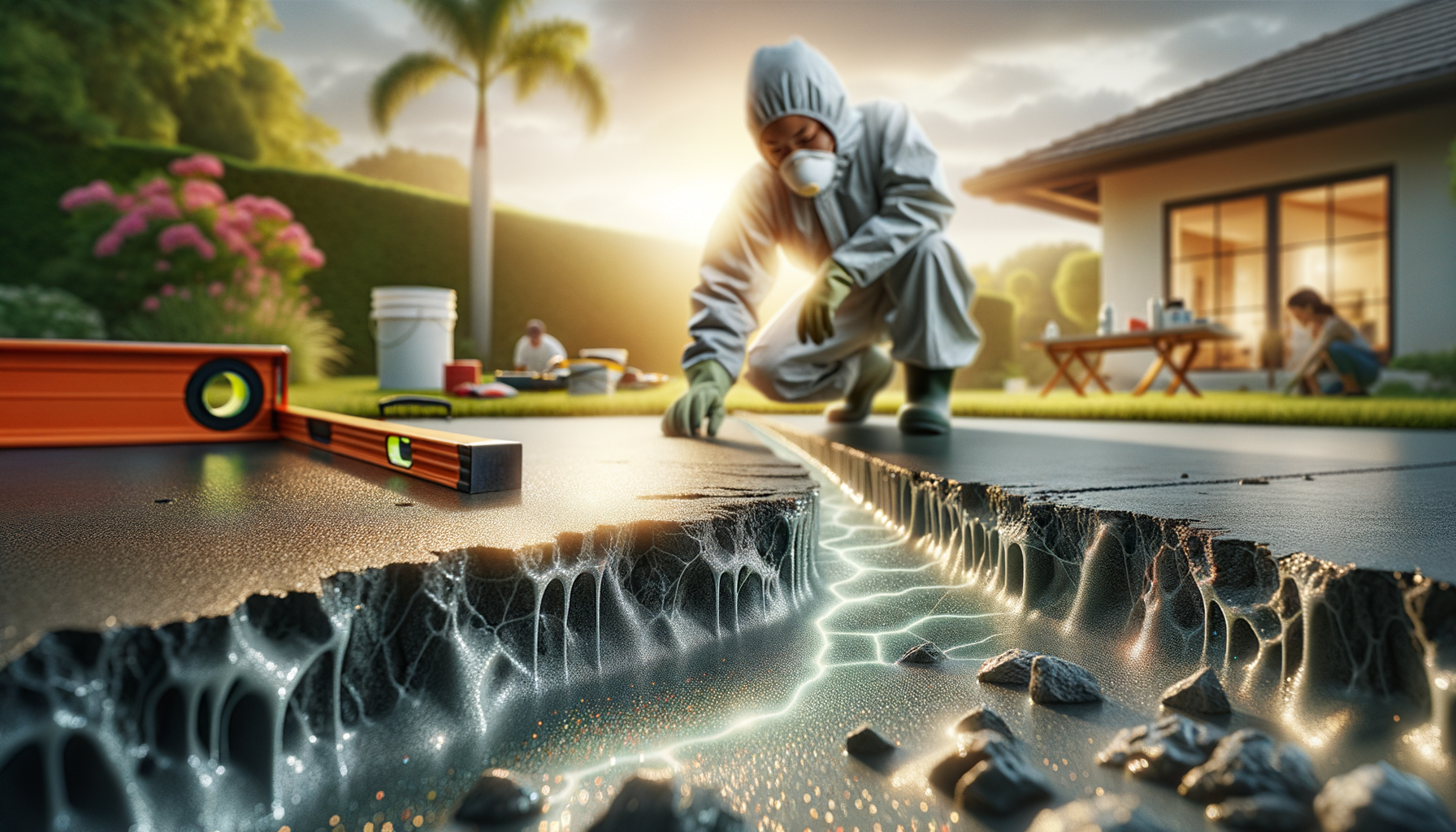What is a Concrete Slab Foundation?
A concrete slab foundation is a flat, solid base made from poured concrete, often with steel inside it for extra strength. It’s used for many homes because it’s strong and doesn’t cost too much. But over time, it can have problems like anything else.
Common Problems with Concrete Slab Foundations
Cracks and Fractures
Over time, small or big cracks can show up in the concrete slab. If we ignore them, they can cause serious problems.
Uneven Settling
Sometimes, parts of the foundation sink more than other parts, making the house unstable.
Moisture Intrusion
Water can get into the foundation through cracks or poorly sealed spots, causing more damage and even mold.
Signs of Concrete Slab Foundation Issues
Cracks in Walls and Floors
If you see cracks in your walls or floors, it could mean there’s a problem with your foundation.
Doors and Windows Misalignment
If doors and windows are hard to open or close, it might be because the foundation is shifting.
Uneven or Sagging Floors
If your floors have dips or slopes, it could be a sign of foundation trouble and needs fixing right away.
Water Pooling or Moisture Issues
Damp spots or water pooling near your foundation are big signs of moisture problems.
Causes of Concrete Slab Foundation Problems
Soil Movement and Shifting
Soil that expands when wet and shrinks when dry can move a lot, affecting your foundation.
Poor Drainage
If water isn’t drained properly, it can collect around the foundation and cause damage.
Poor Construction
Using bad materials or not building the foundation properly can make it weak.
Extreme Weather Conditions
Crazy weather like lots of freezing and thawing or long droughts can stress the foundation and cause damage.
Ways to Fix Concrete Slab Foundations
Slabjacking (Mudjacking)
This fixes uneven settling by injecting a mix under the slab to lift and stabilize it.
Piering
Steel or concrete piers are put deep into the ground to support and level the foundation.
Epoxy Injection
This seals small cracks with epoxy, keeping water out and making the foundation strong again.
Polyurethane Foam Injection
Expanding foam is injected under the slab to lift and stabilize it, a modern fix for foundation problems.
Soil Stabilization
Improving the soil around the foundation helps stop future movement and keeps the foundation stable.
DIY vs. Professional Foundation Repair
DIY Repairs
For small cracks, you might try fixing them yourself with caulk, but this doesn’t solve bigger problems.
Professional Repair
Big or ongoing problems need a pro. Experts can assess and fix the foundation for good stability.
Preventing Foundation Problems
Regular Maintenance
Check your foundation often for any signs of trouble so you can catch problems early.
Proper Drainage Solutions
Make sure your gutters and downspouts direct water away from the foundation.
Soil Moisture Management
Water the soil near the foundation during dry times to stop it from shrinking too much.
Landscaping Considerations
Don’t plant big trees near the foundation so their roots don’t mess with the soil.
Costs of Foundation Repair
Typical Repair Costs
The cost varies depending on the fix:
- Slabjacking: A few thousand dollars.
- Piering: More expensive for major repairs.
Factors Affecting Cost
The cost depends on how bad the damage is and where you live, because labor and material prices differ.
Picking the Right Contractor
Research and Reviews
Find good contractors who specialize in foundation repair and check their reviews.
Experience and Expertise
Make sure the contractor knows what they’re doing and has handled foundation repairs before.
Licensing and Insurance
Ensure they have the right licenses and insurance for full protection.
Final Tips for Homeowners
Regular Inspections
Inspect your foundation regularly to find and fix problems early.
Prompt Action
Fix issues quickly to avoid bigger, more costly repairs later.
Stay Informed
Learn about foundation health and maintenance to take better care of your home.
By understanding these basics, you can keep your home safe and stable.


Leave a Reply